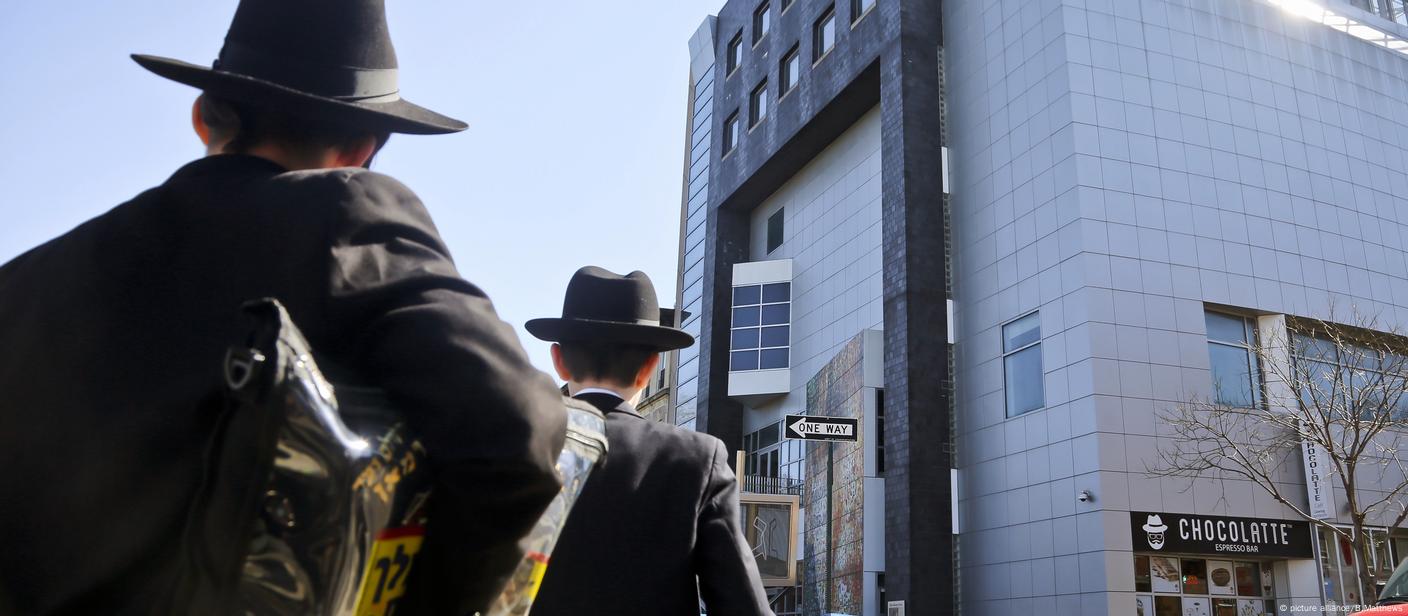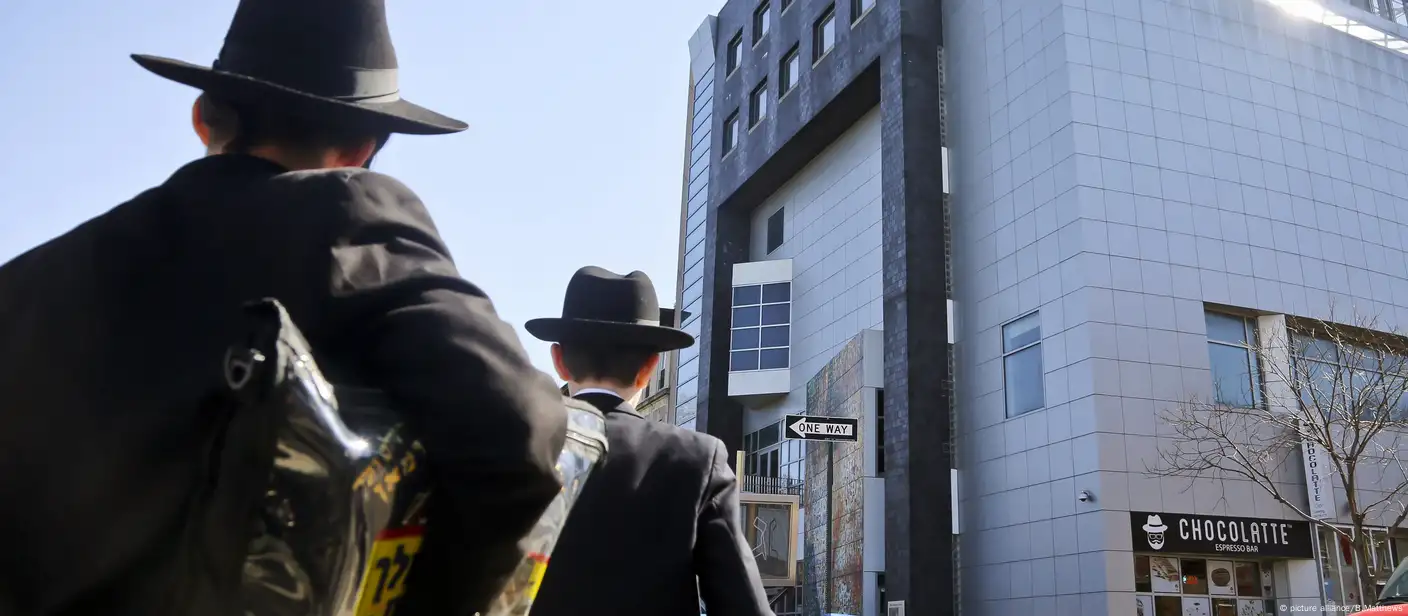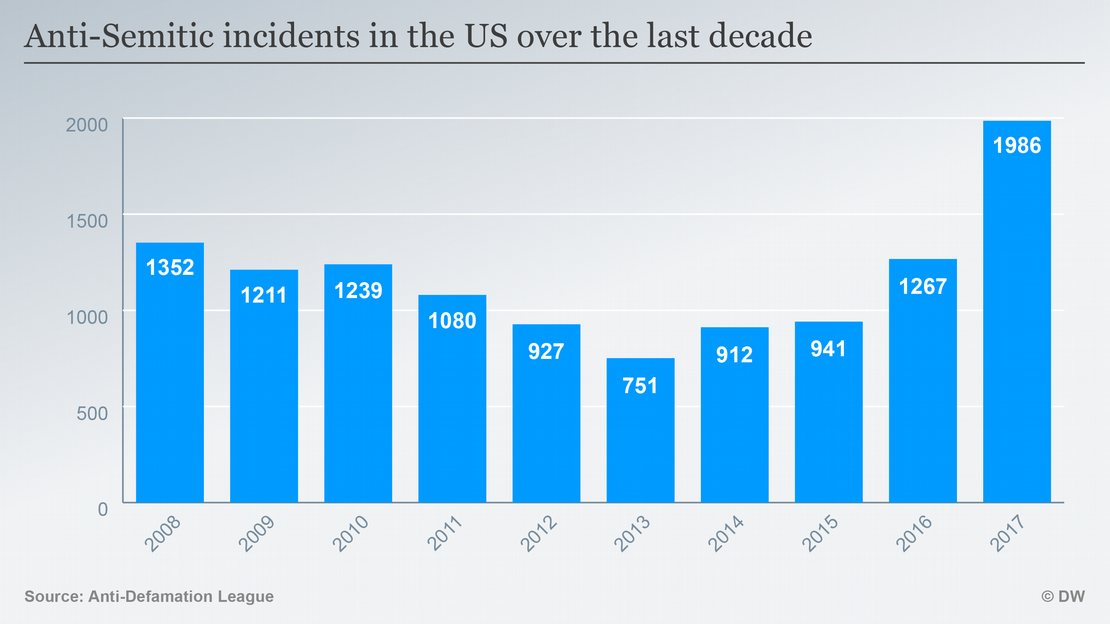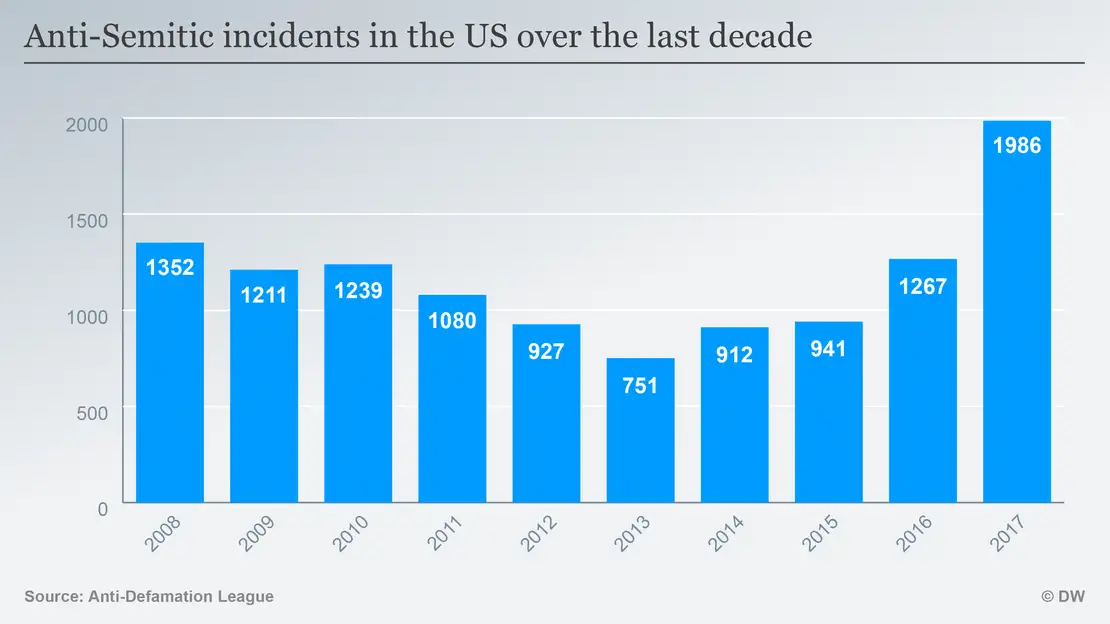Anti-Semitic incidents surge in US: report
February 27, 2018


Anti-Semitic incidents rose 57 percent in the US last year, according to a report published by the New York-based Anti-Defamation League on Tuesday.
The increase marked the largest increase in a single year since the Jewish organization began recording anti-Semitic incidents in 1979.
"It had been trending in the right direction for a long time," ADL chief executive Jonathan A. Greenblatt told The New York Times. "And then something changed."
Read more: What are the links between US and German neo-Nazis?
Key findings:
- The ADL recorded 1,986 anti-Semitic incidents in 2017, up from 1,267 in the year before.
-
Anti-Semitic incidents in primary and secondary schools grew by 94 percent.
-
Vandalism and harassment were the categories that increased the most.
-
New York recorded the largest increase, rising by 90 percent. Florida had the largest decrease in anti-Semitic incidents, dropping 28 percent year-on-year.
-
The figures included more than 150 bomb threats against Jewish community institutions by an Israeli-American teenager during the first half of the year.


Why there is a significant increase: While the ADL said part of the increase could be pegged to an increase in reporting of incidents at schools, other groups have pointed to rising right-wing extremism.
Last month, the Southern Poverty Law Center said neo-Nazi groups operating in the US grew by 22 percent, saying "President Trump in 2017 reflected what white supremacist groups want to see."
Read more: Educating against anti-Semitism: German students visit concentration camp
What is anti-Semitism: According to the ADL, anti-Semitism is "the belief or behavior hostile towards Jews just because they are Jewish."
"It may take the form of religious teachings that proclaim the inferiority of Jews, for instance, or political efforts to isolate, oppress or otherwise injure them."